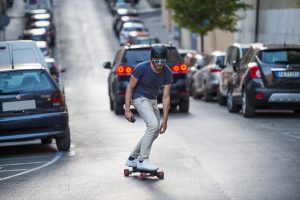Cities all over the world celebrate Sept 22 as “World Car Free Day”. This is part of a long tradition of the car-free movement that has led cities and their citizens to prioritize pedestrians, cyclists, and public transit over the private automobile.
The World Carfree Network says that the World Car-Free Day can be a showcase for just how our cities might look like, feel like, and sound like without cars… 365 days a year.
Meanwhile, every year from 16 to 22 September, European towns showcase their commitment to clean and sustainable urban transport during #MobilityWeek.
Car-free days are an opportunity for cities to highlight how congested roads can be used in different ways. From races for alternative-energy powered vehicles in Budapest, to horse-riding in São Paulo, to street picnics in Vienna, to running in Jakarta, cities and the people who live in them are stressing the alternatives to polluting vehicles on this important day.
Check out this article where we talk about the cities of the future 😉
An emblematic model of a car-free day: Bogota’s Ciclovía
Every Sunday for almost 50 years, the City of Bogotá has closed off a continuous network of streets and avenues, banning motorized vehicles so that residents can safely go for a walk or ride a bicycle safely. What began as an activist and community initiative progressively became institutionalized and is now a core measure in the city’s public policy with regard to leisure and improving the quality of life.
Air pollution caused by transport
Car-free days are a massive opportunity for cities to realize how much pollution affects our lives. Vehicle emissions are one of the main sources of outdoor air pollution, particularly in cities. Ambient air pollution alone caused some 4.2 million deaths in 2016, according to the World Health Organization. Transport is also the fastest growing source of fossil-fuel CO2 emissions, the largest contributor to climate change. 
The results of going car-free are clear to see. For instance, the first “journée sans voiture” (day without a car) in Paris, France was held in September 2015 and was found to reduce exhaust emissions by 40 percent.
“Most cities have been designed around mobility for cars, and it is high time we change this and start designing cities around human mobility,” says Rob de Jong, Head of UN Environment’s Air Quality and Mobility Unit.
E-rides Help Reduce Air Pollution
The biggest challenge for highly dense cities is the high carbon emissions from road transportation. In the UK alone, road transportation contributes 28 percent of carbon emissions. Moreover, it is the biggest sector that produces the most harmful emissions globally. Electric mobility devices help lessen air pollutants since they produce zero emissions.
Electric scooters, electric bikes, and other micro-mobility devices use electric motors and don’t have tailpipes, so they don’t emit any bad emissions. A study by shared e-scooter company Lime found that e-scooters helped save around 330 tons of CO2 emissions in Paris for a year. Overall, these transport devices have proven their benefit and role in reducing carbon emissions in the atmosphere.
Car Free Day lasts only 24 hours, but it is just a chance to remind us that using a car is not always essential. And that today we have so many more sustainable alternatives available to us!
Either personal mobility device will give you a convenient, efficient, and quick way to travel within cities. When choosing an e-ride, start by determining your commuting needs. Do you need an everyday ride? Do you need a lightweight ride to carry inside elevators or up the stairs? Do you need a compact ride to store inside your small apartment?
Linky could be the perfect solution for your commuting needs. It is safe, light, and extremely portable (you can carry it in a backpack 😉 )


